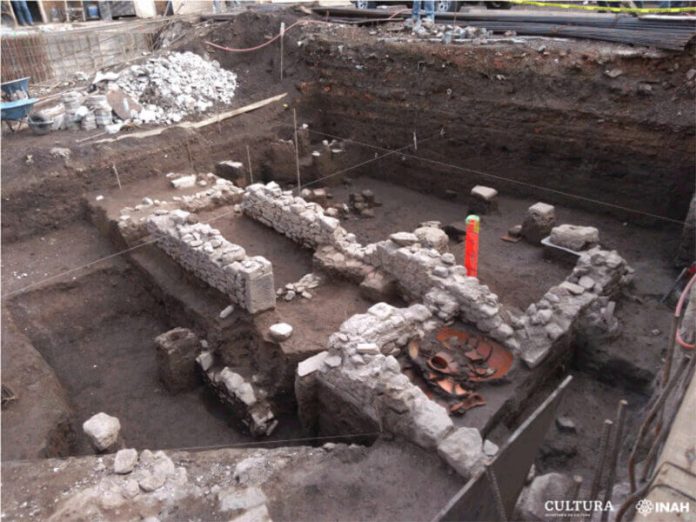Archaeologists have uncovered new evidence of cultural resistance to the Spanish conquest of Mexico.
The National Institute of Anthropology and History (INAH) said that its archaeologists discovered the remains of a residential complex and stone workshop in the Mexico City neighborhood of Morelos, which borders Tlatelolco, a neighborhood where a pre-Hispanic altepetl, or city-state, was once located.
The remains confirm that a few years after the conquest of Tlatelolco in the early 16th century, Mexica people returned to their old settlements to continue with their ceremonies and religious rituals “as a sort of cultural resistance,” INAH said in a statement.
It said the remains date back to the late postclassic period (1200-1521) and early colonial period (1521-1650) and remained for centuries beneath the busy streets of Morelos, located just north of Mexico City’s historic center.
The architecture of the residential complex, which included an area for ceremonies and rituals, allowed INAH archaeologists to conclude that it was occupied between 1525 and 1547.
“A small warehouse with globular pots and organic remains that belong to the colonial period was found,” INAH said.
The institute also said that two anthropomorphic statues measuring 35 cm and 40 cm were also found at the site, located near the Tlatelolco archaeological zone. José Antonio López, an INAH archaeologist, said that interpreting the meaning of the statues is not easy.
“When they were ‘alive’ in the pre-Hispanic times they were possibly buried at this place with a dedication, but with the arrival of the Spanish, and with the indigenous people not being able to recover their ancient deities, it’s possible that their meaning changed, as a form of religious and cultural resistance,” he said.
In the stone workshop, archaeologists recovered a large quantities of gray, golden and green obsidian, INAH said. Xantal Rosales García, another INAH archaeologist, said that 15,000 finished objects and almost two tonnes of obsidian were found.
Archaeologists also discovered the graves of 36 adults and children who died in pre-Hispanic and colonial times. Josefina Bautista Martínez, an anthropologist, said that one child was buried with a 15-centimeter-long obsidian knife placed on his head. She also said that a fragment of silex was placed on his body and one of his teeth was replaced with a green stone.
The archaeologists also uncovered numerous ceramic pieces including more than 200 female figurines. According to López, all the recovered materials are indicative of a “hidden religious persistence of these indigenous groups during evangelization despite the Franciscans being very close by.”
Mexico News Daily
